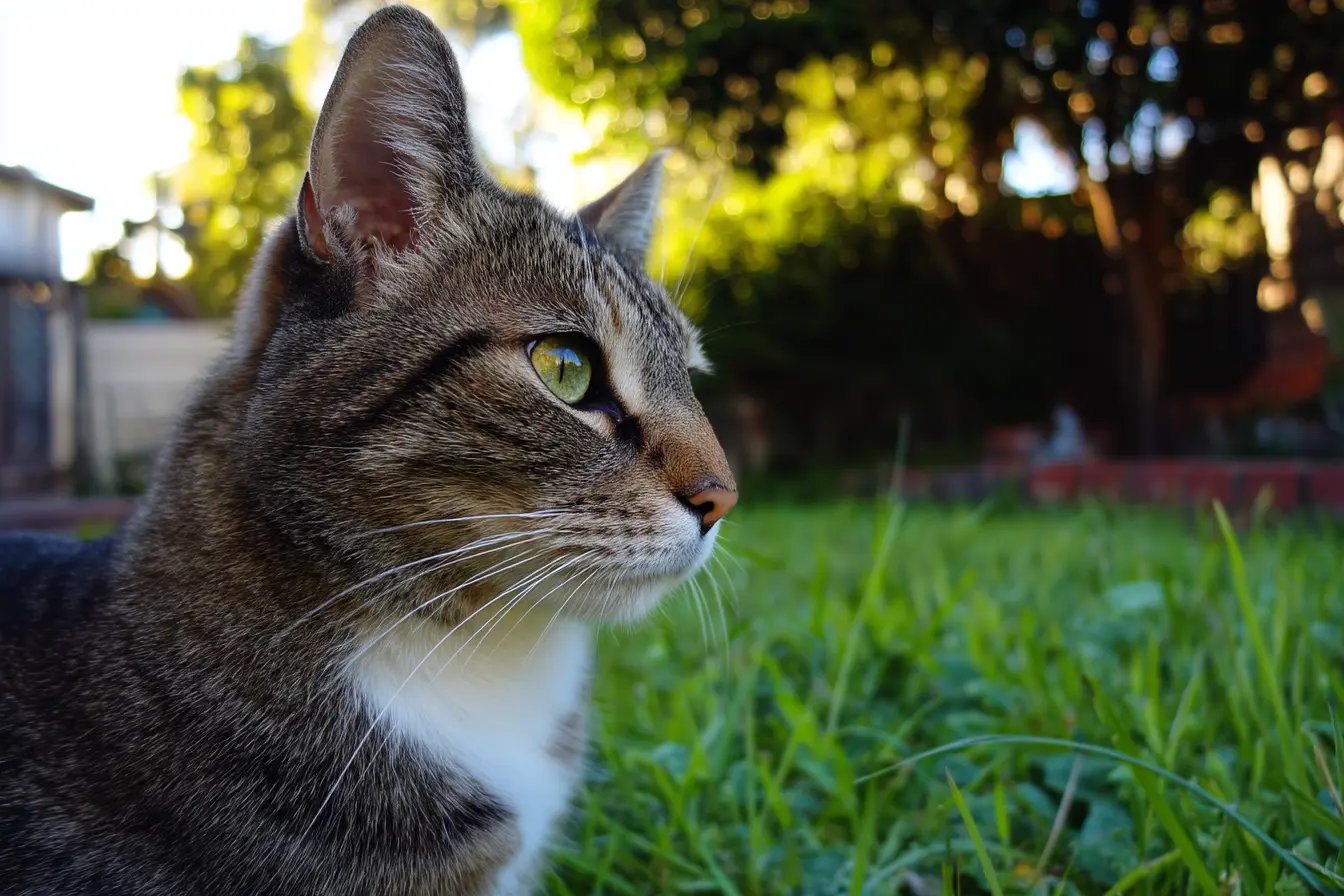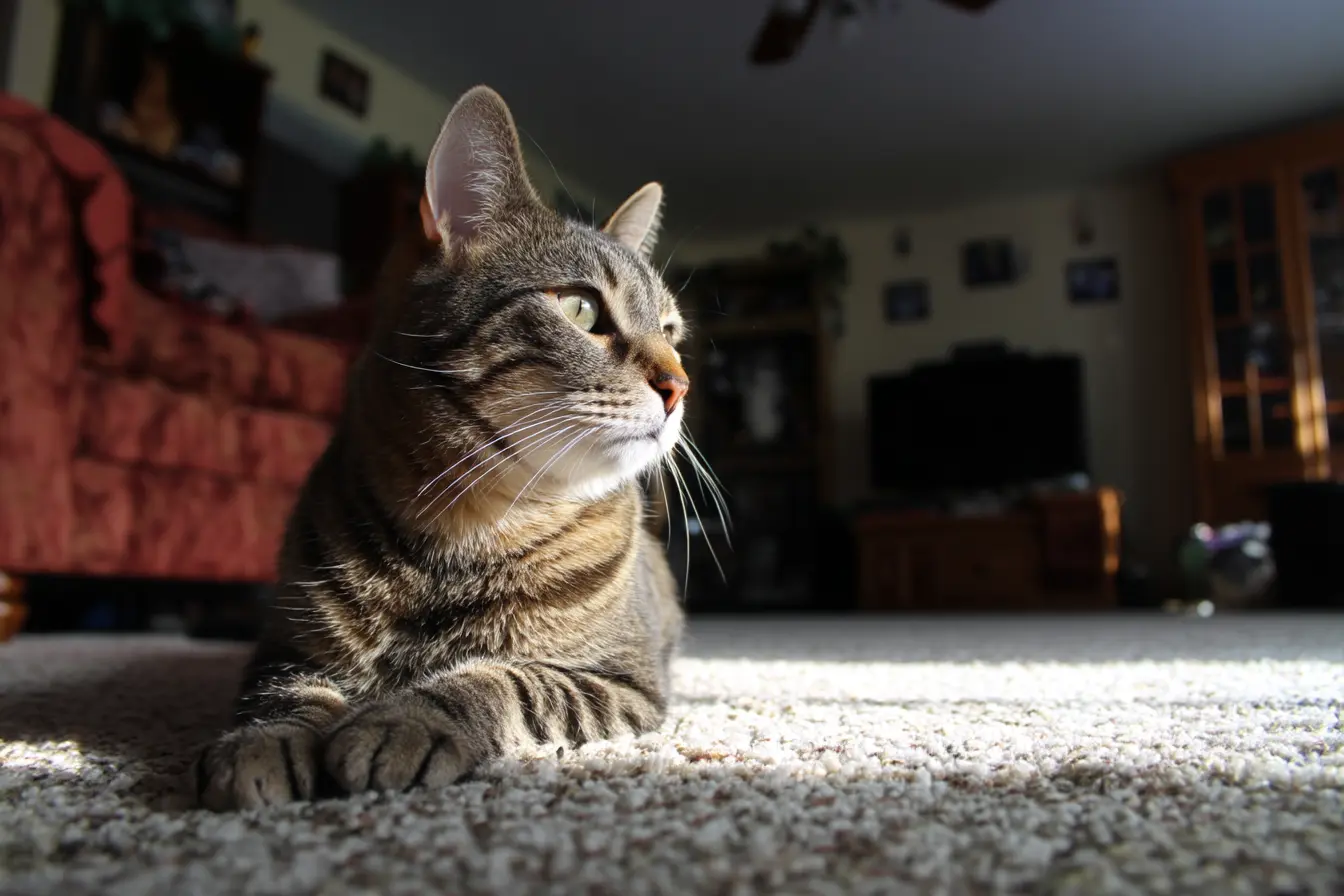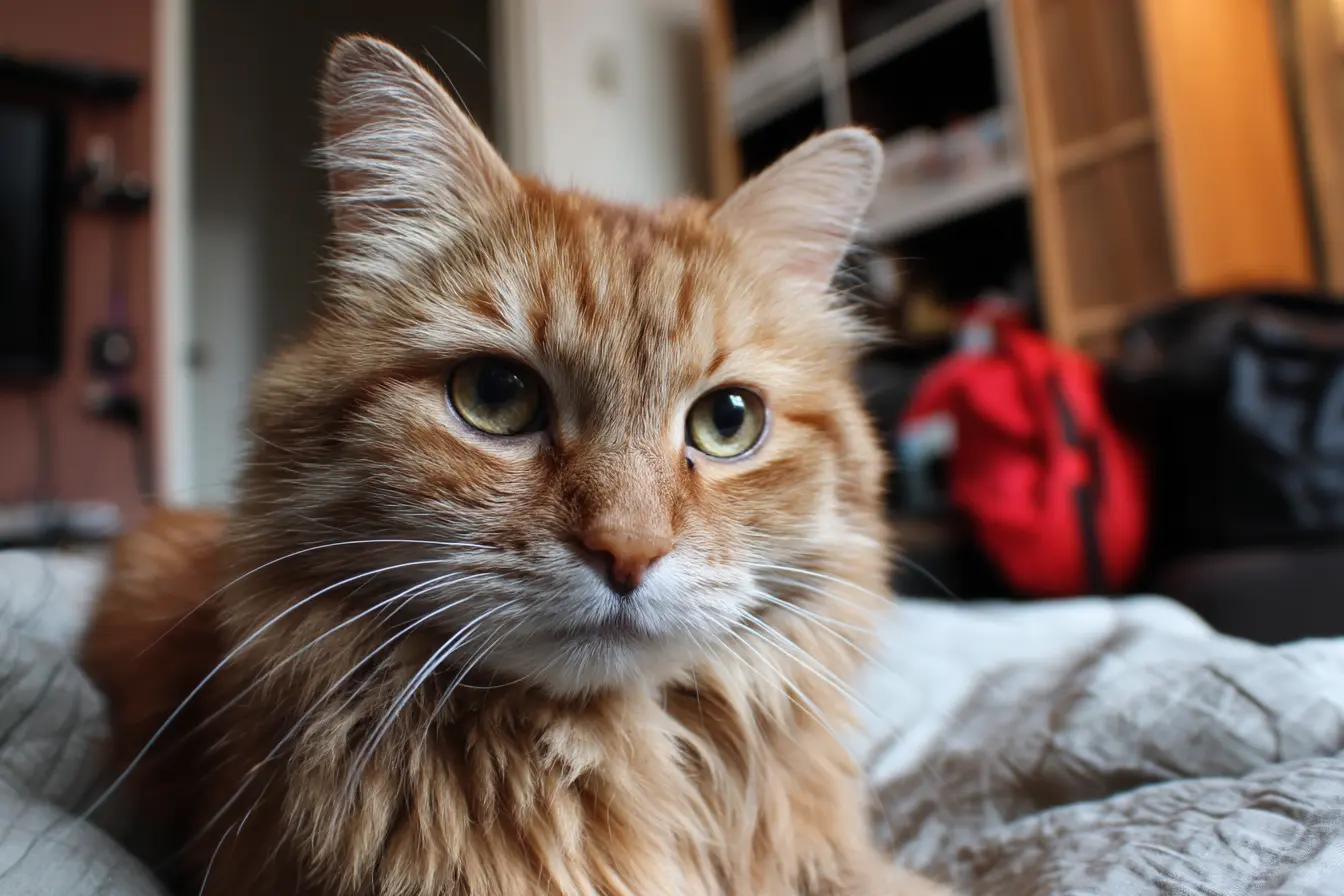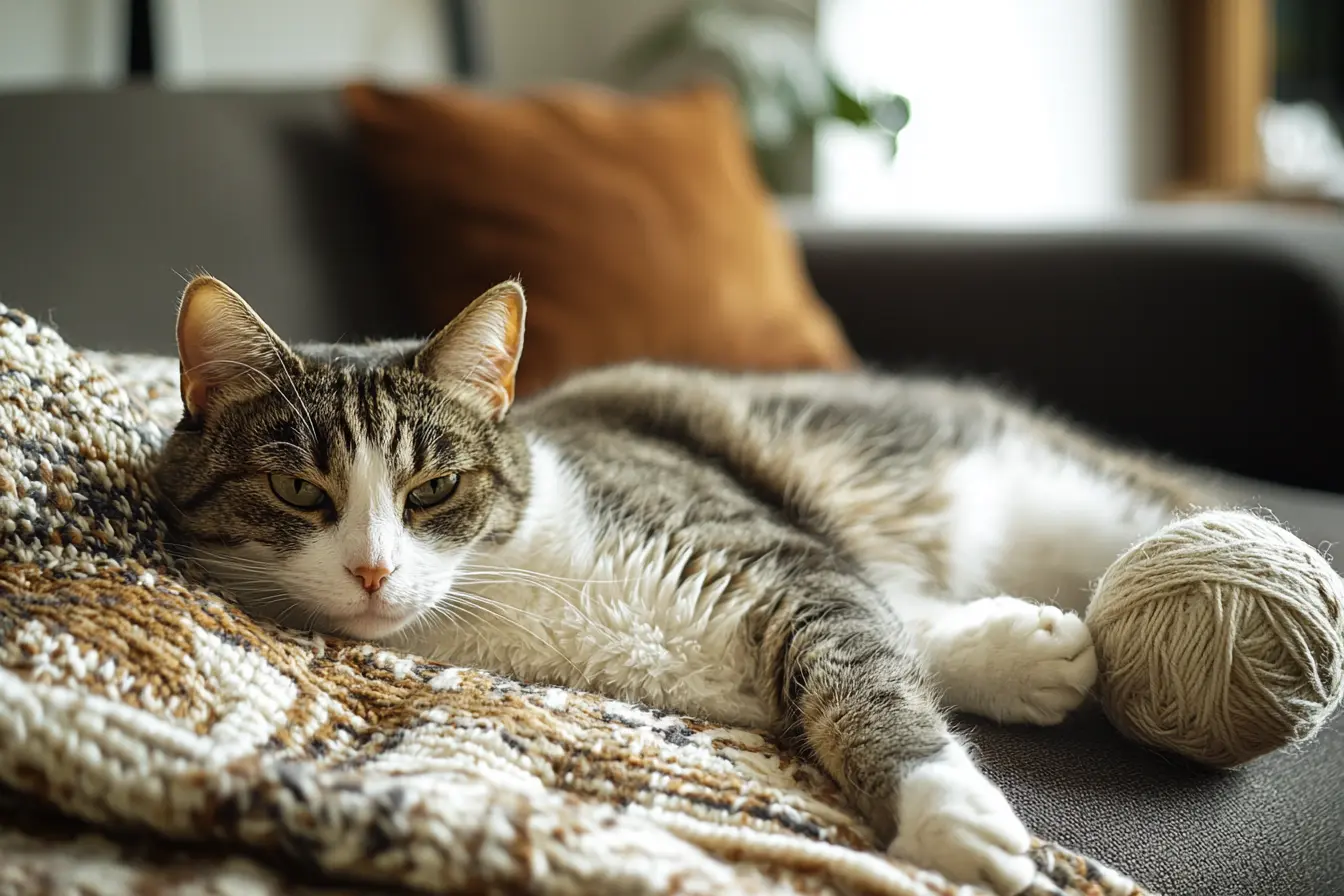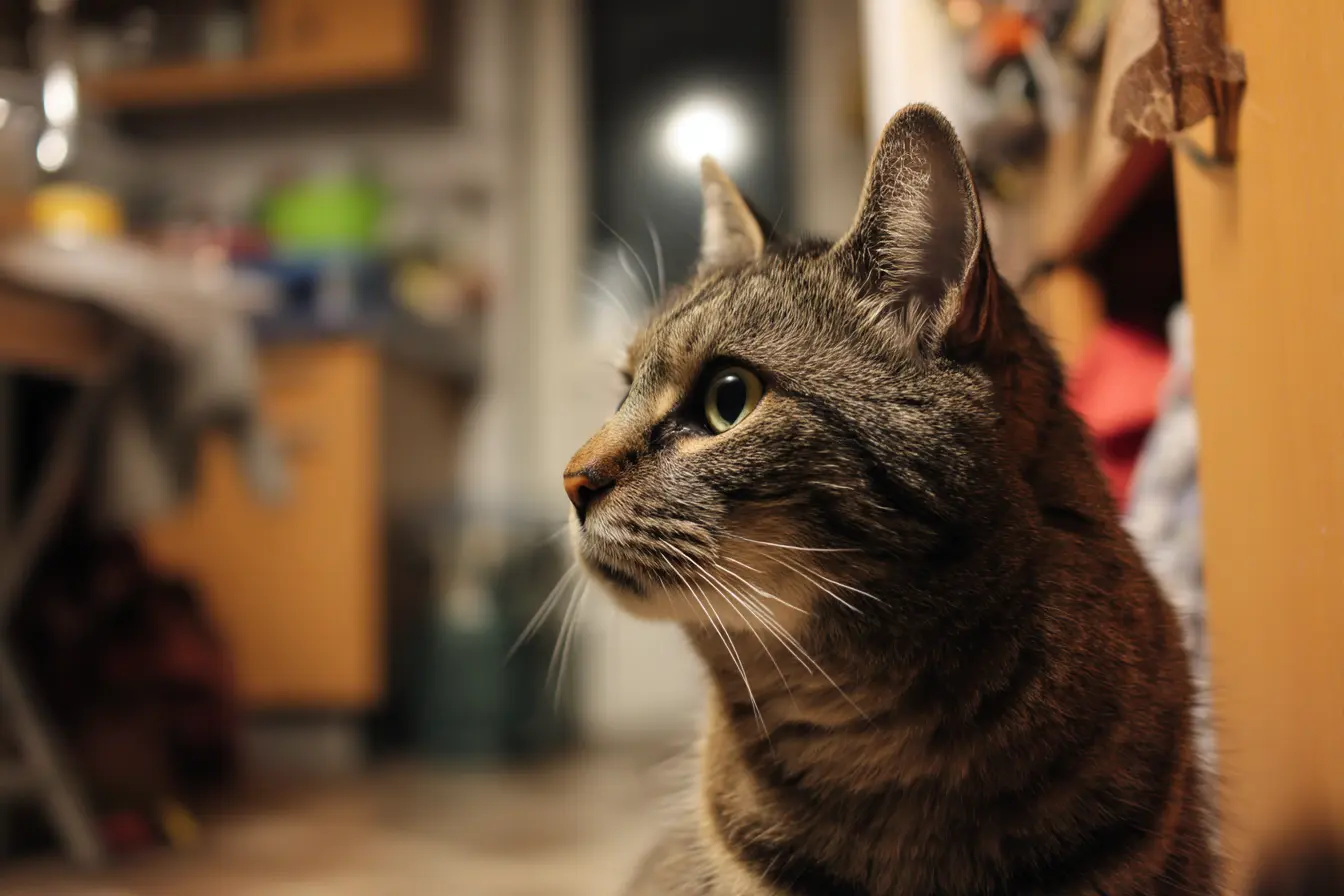
Upper Respiratory Infections in Cats: Causes, Symptoms, Treatment, and Prevention
Upper Respiratory Infections (URIs) are common in cats and can cause symptoms similar to a human cold. While mild cases may resolve on their own, more severe infections can lead to complications such as pneumonia or chronic respiratory issues.
Understanding the causes, recognising symptoms early, and implementing effective treatment and prevention strategies can help keep your cat healthy and comfortable.
What is an Upper Respiratory Infection (URI) in Cats?
A feline upper respiratory infection (URI) is a contagious infection affecting the nose, throat, and sinuses. It is typically caused by viruses and bacteria that spread through direct contact, contaminated objects, or airborne droplets.
Although some cases are mild, others can become chronic or life-threatening, especially in kittens, elderly cats, or those with weakened immune systems.
Causes of Upper Respiratory Infections in Cats
URIs are highly contagious and are commonly found in multi-cat environments such as shelters, catteries, and breeding facilities. The main causes include:
Viral Infections (Most Common Causes)
Feline Herpesvirus-1 (FHV-1)
- Also known as feline viral rhinotracheitis (FVR).
- The most common cause of URIs in cats.
- Once infected, cats carry the virus for life and may have flare-ups during periods of stress.
Feline Calicivirus (FCV)
- Causes respiratory symptoms and sometimes mouth ulcers.
- Can mutate, leading to different strains with varying severity.
Bacterial Infections (Often Secondary Infections)
Bordetella bronchiseptica
- Affects both cats and dogs.
- Can be more severe in kittens or immunocompromised cats.
Chlamydophila felis
- Often associated with eye infections (conjunctivitis) in addition to respiratory symptoms.
Mycoplasma spp.
- Can contribute to chronic respiratory disease.
How Do Cats Catch a URI?
Cats contract URIs through direct or indirect contact with infected animals or contaminated environments.
- Direct transmission: From cat-to-cat contact (grooming, sneezing, sharing food/water bowls).
- Indirect transmission: Contaminated surfaces such as litter boxes, bedding, or human hands.
- Airborne droplets: Sneezing or coughing can spread infectious particles.
At-Risk Cats
Some cats are more susceptible to URIs, including:
- Kittens (immature immune systems)
- Senior cats (weakened immunity)
- Unvaccinated cats
- Shelter or cattery cats (high exposure risk)
- Stressed cats (stress can weaken immunity)
- Cats with existing health conditions (e.g., FIV or FeLV-positive cats)
Symptoms of Upper Respiratory Infections in Cats
The symptoms of URIs in cats can range from mild to severe and usually last seven to twenty-one days.
Common Symptoms
- Sneezing (often the first sign)
- Nasal discharge (clear, white, yellow, or green)
- Runny or red eyes (conjunctivitis)
- Coughing
- Fever
- Lethargy (reduced energy levels)
- Loss of appetite
- Ulcers in the mouth or nose (common with calicivirus)
- Difficulty breathing (if severe congestion occurs)
Severe Symptoms (Require Immediate Vet Care)
- Difficulty breathing or wheezing
- Bluish gums or tongue (lack of oxygen)
- Severe dehydration
- Persistent high fever
- Refusing to eat for more than twenty-four hours
- Eye ulcers leading to vision loss
Diagnosing a URI in Cats
A vet will diagnose a URI based on clinical signs and medical history. In persistent or severe cases, diagnostic tests may include:
- Swabs from the nose, throat, or eyes to identify the virus or bacteria.
- Blood tests to check overall health.
- X-rays (if pneumonia is suspected).
- PCR testing to detect specific viral or bacterial pathogens.
Treatment for Upper Respiratory Infections in Cats
Most mild URIs resolve within seven to ten days, but treatment may be needed to relieve symptoms and prevent complications.
Home Care for Mild Cases
Keep Your Cat Hydrated
- Offer fresh water and consider wet food to increase fluid intake.
- Use a pet-safe electrolyte solution if dehydration is suspected.
Encourage Eating
- Offer strong-smelling foods (like tuna or warm chicken) to stimulate appetite.
- If your cat refuses to eat, consult a vet.
Use a Humidifier or Steam Therapy
- Running a humidifier can help clear nasal congestion.
- Steam therapy: Bring your cat into a steamy bathroom for ten minutes.
Clean Discharge from Eyes and Nose
- Use a warm, damp cloth to gently wipe away mucus.
- Avoid using human tissues or wipes with alcohol/fragrances.
Isolate Infected Cats
- If you have multiple cats, keep the sick cat separate to prevent spreading the infection.
Veterinary Treatment for Severe Cases
- Antibiotics (if a bacterial infection is involved).
- Antiviral medications (for severe herpesvirus infections).
- Fluids (IV or subcutaneous) if dehydration occurs.
- Eye drops or ointments to treat conjunctivitis.
- Nutritional support (feeding tubes if the cat refuses to eat for long periods).
Preventing Upper Respiratory Infections in Cats
Vaccination
Vaccination is the best prevention against feline URIs. Core vaccines include:
- Feline herpesvirus (FHV-1)
- Feline calicivirus (FCV)
- Given as part of the F3, F4, or F5 vaccine series.
- Kittens should receive their first vaccination at eight to nine weeks, followed by boosters.
Good Hygiene Practices
- Regularly clean food and water bowls.
- Disinfect litter boxes and bedding.
- Wash your hands before and after handling multiple cats.
Reduce Stress
Stress weakens a cat’s immune system, making them more vulnerable to infections.
- Provide a stable environment with minimal changes.
- Use pheromone diffusers (e.g., Feliway) to reduce anxiety.
Quarantine New Cats
- If adopting a new cat, isolate them for two weeks before introducing them to other pets.
- This helps prevent potential disease spread.
Strengthen Your Cat’s Immune System
- Feed a balanced diet rich in vitamins and minerals.
- Ensure regular vet check-ups to detect early signs of illness.
Can Humans Catch a Cat’s URI?
Most feline URIs do not spread to humans, but Bordetella bronchiseptica and Chlamydophila felis can rarely cause respiratory symptoms in people with weak immune systems. Proper hygiene can minimise this risk.
Conclusion
Upper Respiratory Infections (URIs) are highly contagious and can range from mild to severe. Understanding the causes, recognising early symptoms, and providing appropriate care can help prevent complications.
While mild cases can often be managed at home, severe symptoms require veterinary attention to prevent serious health issues. Vaccination, good hygiene, and reducing stress are key to keeping your cat safe from respiratory infections.
If your cat develops severe congestion, difficulty breathing, or stops eating, seek veterinary care immediately. Early intervention is crucial for a fast recovery and preventing long-term complications.
Contents
- What is an Upper Respiratory Infection (URI) in Cats?
- Causes of Upper Respiratory Infections in Cats
- How Do Cats Catch a URI?
- Symptoms of Upper Respiratory Infections in Cats
- Diagnosing a URI in Cats
- Treatment for Upper Respiratory Infections in Cats
- Preventing Upper Respiratory Infections in Cats
- Can Humans Catch a Cat’s URI?
- Conclusion
Tags
Related Vets
Vets near you
Speciality vets
- Aquatics vet specialists
- Birds vet specialists
- Camelids vet specialists
- Cats vet specialists
- Cattle vet specialists
- Deer vet specialists
- Dogs vet specialists
- Equines vet specialists
- Exotic vet specialists
- Goats vet specialists
- Pigs vet specialists
- Poultry vet specialists
- Sheep vet specialists
- Small Mammals vet specialists
- Wild vet specialists
